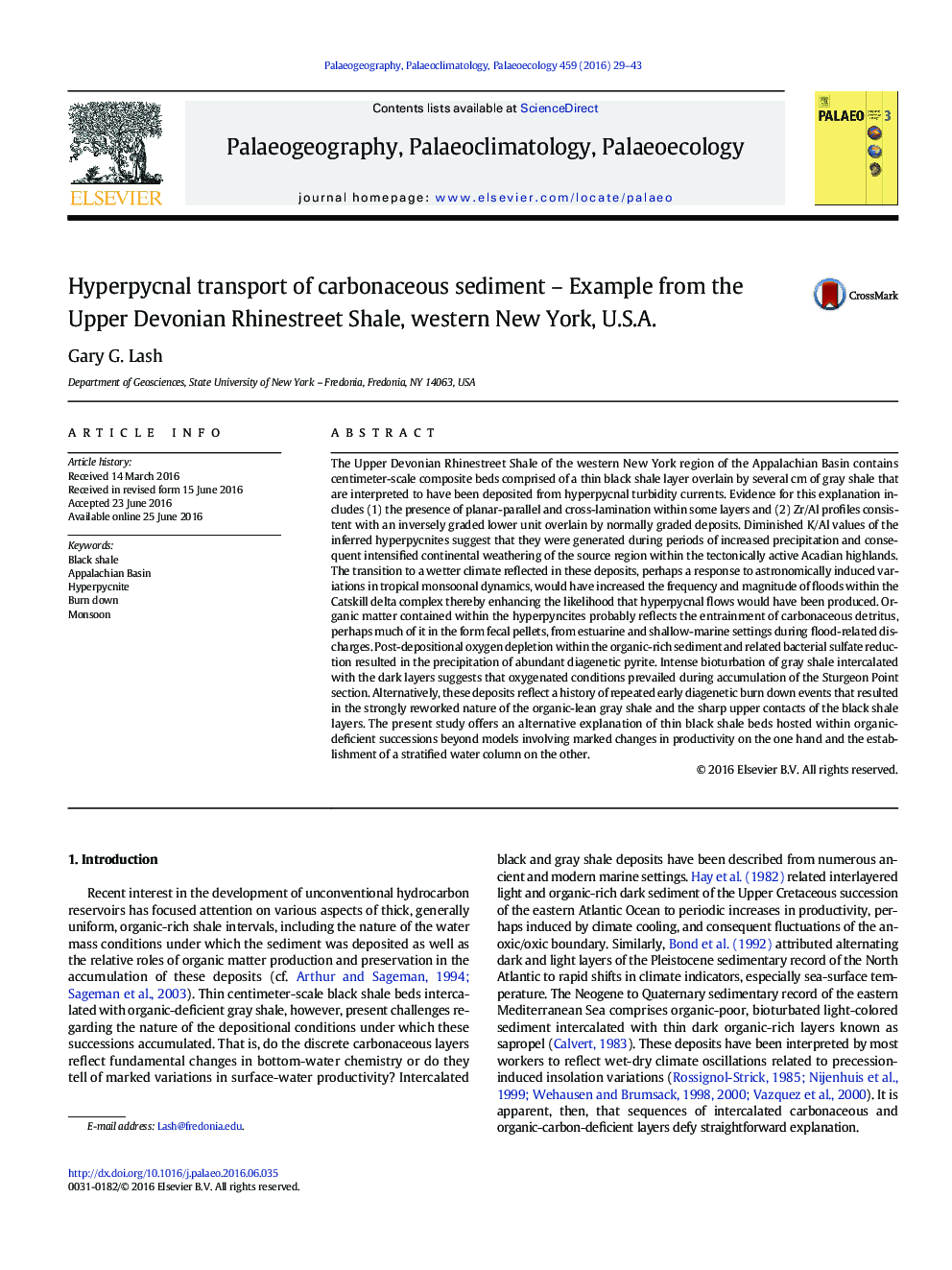| کد مقاله | کد نشریه | سال انتشار | مقاله انگلیسی | نسخه تمام متن |
|---|---|---|---|---|
| 4465620 | 1622132 | 2016 | 15 صفحه PDF | دانلود رایگان |

• Upper Devonian black shale layers accumulated from hyperpycnal flows.
• Hyperpycnal turbidity currents were generated during periods of wetter climate.
• Hyperpycnal flows transported organic debris to cratonic basinal environments.
• Hyperpycnites appear to have been diagenetically altered by burn down.
The Upper Devonian Rhinestreet Shale of the western New York region of the Appalachian Basin contains centimeter-scale composite beds comprised of a thin black shale layer overlain by several cm of gray shale that are interpreted to have been deposited from hyperpycnal turbidity currents. Evidence for this explanation includes (1) the presence of planar-parallel and cross-lamination within some layers and (2) Zr/Al profiles consistent with an inversely graded lower unit overlain by normally graded deposits. Diminished K/Al values of the inferred hyperpycnites suggest that they were generated during periods of increased precipitation and consequent intensified continental weathering of the source region within the tectonically active Acadian highlands. The transition to a wetter climate reflected in these deposits, perhaps a response to astronomically induced variations in tropical monsoonal dynamics, would have increased the frequency and magnitude of floods within the Catskill delta complex thereby enhancing the likelihood that hyperpycnal flows would have been produced. Organic matter contained within the hyperpyncites probably reflects the entrainment of carbonaceous detritus, perhaps much of it in the form fecal pellets, from estuarine and shallow-marine settings during flood-related discharges. Post-depositional oxygen depletion within the organic-rich sediment and related bacterial sulfate reduction resulted in the precipitation of abundant diagenetic pyrite. Intense bioturbation of gray shale intercalated with the dark layers suggests that oxygenated conditions prevailed during accumulation of the Sturgeon Point section. Alternatively, these deposits reflect a history of repeated early diagenetic burn down events that resulted in the strongly reworked nature of the organic-lean gray shale and the sharp upper contacts of the black shale layers. The present study offers an alternative explanation of thin black shale beds hosted within organic-deficient successions beyond models involving marked changes in productivity on the one hand and the establishment of a stratified water column on the other.
Journal: Palaeogeography, Palaeoclimatology, Palaeoecology - Volume 459, 1 October 2016, Pages 29–43